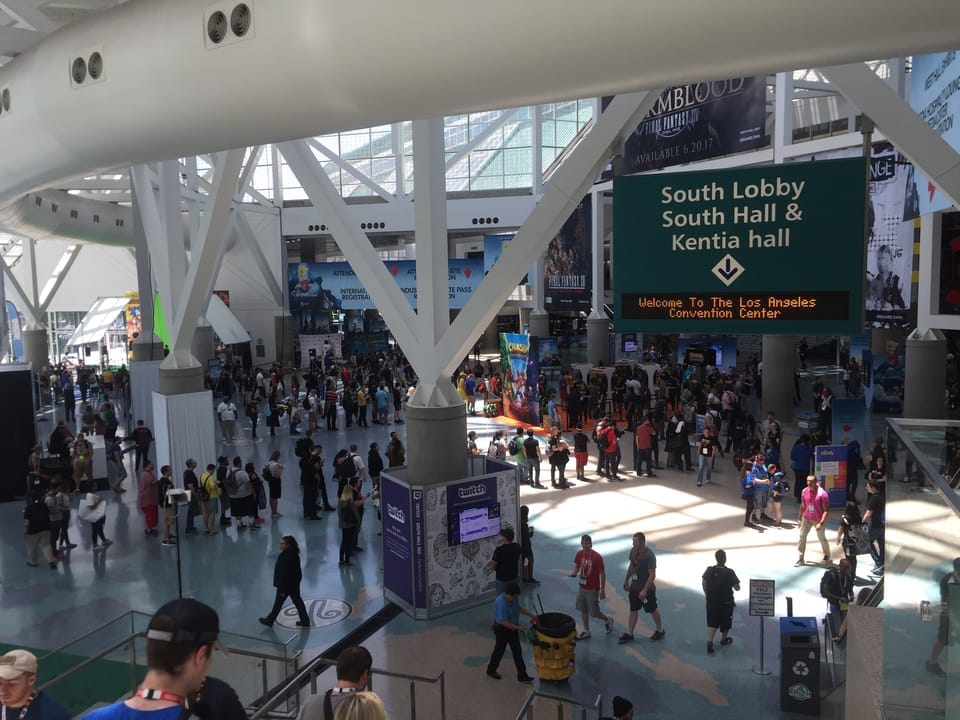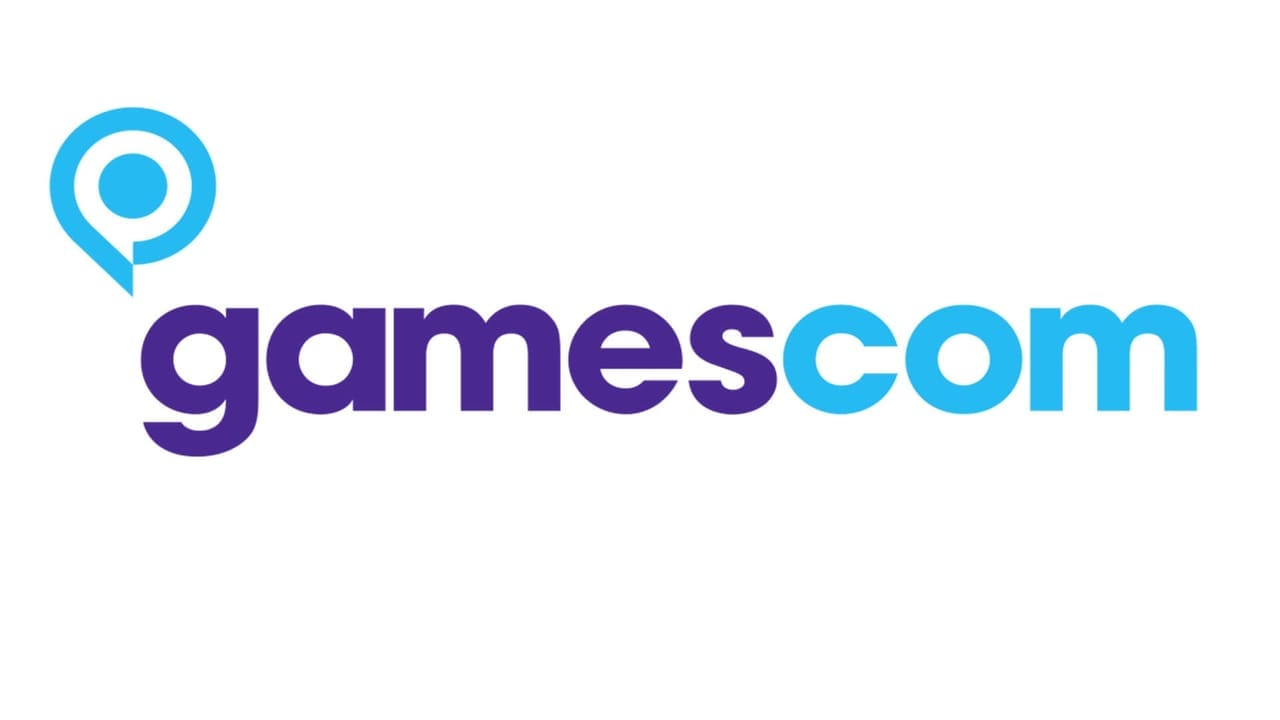There has been a lot of talk about E3 2017 and it being the first year the public has been allowed to attend the event, swelling the number of attendees from 50,300 last year to 68,400. That is an incredible increase of about 36%, so it's reasonable for people to be concerned about what that will mean for the show in terms of getting around, ability to get in places without having to wait an incredible amount of time, and even security. Hyperbole has been the go-to for many tossing around opinions on how the influx of people was handled this year, and I wanted talk about the issues at hand without masking it behind crazy theories or out-there hysteria.
I'll start by admitting I've only attended two E3s, 2016 and 2017. So, I only have one public-less E3 to compare E3 2017 with, which is worth keeping in mind. With that said, my experience with E3 2017 was pretty close to E3 2016, with a few small gripes.
The Entertainment Software Association (ESA), the organization that puts on E3, seemed half-prepared, and nobody realized the great effect the influx of people would have on the show. It was not an insignificant amount, increasing the attendance by over a third in one year. They didn't have the benefit of a gradual increase, changing policies and the like over time. They seemed to think doing things the same way as before, just with more security guards, would be enough.
Not only that, this influx of people was a whole new group that operates in a very different manner than those that have attended past E3s. Namely, this new group, the public, didn't really have much of an agenda of things to do going in. Press and many in the industry, for example, squirrel themselves away in meeting rooms throughout the convention center, largely unseen for a great portion of the show. That is not the case for the public who is out on the floor for the entirety of their stay, meandering about or waiting in absurdly long lines. A group milling about is something different to take into consideration when organizing an event. Things needed to change and, for example, the ESA opened the doors to the showfloor 15 minutes earlier than scheduled because the amount of people waiting to get in was creating a safety issue.

The ESA was not the only group unprepared for the influx of people. Pretty much every exhibitor was not prepared whatsoever for the amount of people on the showfloor. Booths were set up in very inefficient ways, with some booths evolving over the course of this year's show. Nintendo, for example, changed quite a lot, adding barricades for lines and changing where people waited to get their chance to play Super Mario Odyssey, Splatoon 2, and other games on display.
This of course created a lot of inconvenience for everyone involved. For me personally, I avoided the showfloor unless I had an appointment at a booth somewhere. Just about everywhere I went was congested. For example, I had some free time on the first day of the show and wanted to check out the booths to get a handle on where things were; in one portion it took me about 15 minutes to go 100ish feet. When scheduling back to back appointments, where it would ideally only take me a few minutes to get from one area to the next, this was obviously a problem.
Also, for my personal experience as press, not many places were set up with areas for us to check out games on display. When free, unscheduled time is limited, it's just not possible to wait in line for over an hour, or in many cases a few hours, to get some time with a game. Not all lines were that bad, but more than a few were. It's not that I'm looking for special treatment or that I feel as press I deserve more, I just want to get in as much as I can to present it to our readers later. It's a matter of utility, not self-aggrandizement.
The experience for the public was similar too, based on what I overheard on several occasions. I heard more than a few complaints from the public that getting around was a pain, waiting was incredibly long, and it was unclear in some areas where they could or could not go. To some, the experience was dreadful and they'd rather not come back; to others, the chance to play just a few games in the 6-8 hours the showfloor was open each day was worth it.
I mention that because it was not just the press or industry folk who had a less-than ideal experience getting around at E3 this year. It was a problem that everyone involved should consider for next year, as there is no doubt the number of attendees will only increase.
However, beyond being a relatively minor inconvenience as most of my time as press was spent at scheduled appointments, everything worked just as well as it did last year. I hope the public continues to go, as being at E3 is a pretty cool experience and will satisfy many who identify as a gamer. Doing some demos and chatting with some of the public attendees was great and offered a different experience than last year. It's easy to be cynical and be less-than excited when surrounded by other press who don't react much. The jolt of energy an excited public adds makes the experience more enjoyable, personally. I can't count how many times I was in a demo or presentation grouped with other press treating it like a classroom or business meeting, where the public cheered, clapped, and showed excitement; it was cool to see. Maybe it colors my experience biased in a different direction, but I think it offers a good jolt of energy to the show.

The big concern, of course, has been over security. To those raising concerns about security, I don't think anyone can argue they are unreasonable. Security at E3 was uneven at best, with some checking badges and others not, some having different rules than others (for example, one time food/drink was allowed another time not), and no screening to get into the convention center.
A group of near 70,000 people is going to have some problems over the course of three days, no doubt about it. So, it just makes me wonder why some basic security measures taken at everyday events around the world, including the U.S., weren't in place. It's common practice at places like football games, whose stadiums rival and many surpass the amount of people in attendance, to do bag checks or have metal detectors. There's nothing special about E3; it's still an incredible amount of people packed into one place.
The ESA should be looking to gamescom for their cues. It's a similar type of event with a lot of exhibitors, way more public, industry and press, and announcements made at the show. Last year, a staggering 345,000 people attended, and I don't remember there ever being a big deal about security at the event. At least, I can say for certain it was never brought to the levels of discussion as this year's E3. Part of that may be due to the fact that gamescom does have some higher security in place, as evidenced by some of the changes they made to last year's show.
I'd say it's not unreasonable to expect at least the common practice of security at comparable events for E3. So, to the rather alarming amount of comments I've seen from those saying that the press or industry people are trying to create a story out of nothing to protect E3 as its "own" to get rid of the public, let go of your preconceived notions and biases to create your own narrative against those you disagree with. Arguing against basic safety that should be there in the first place, and is in no way unreasonable or too restricting, is delusional.
Also, those out there taking the security discussion to hyperbolic levels, stop it. Let me reiterate what I said earlier: there's nothing special about E3 in terms of the people attending. Any time a large group of people gets together, stuff will happen. For example, this article brings up some alarming security events. Instances like those happen at events of this or comparable size all the time. Things get stolen, medical emergencies happen (though it is alarming a security guard didn't even have a protocol to contact medical services when seeing an emergency, or didn't follow it), and sometimes people get hurt. As someone who has worked in law enforcement for even small events of just mere thousands, trust me, a lot of stuff happens, most of which the media or other attendees don't hear about. And we are probably just hearing about this year's incidents because security is a hot button issue. I don't have anything to point to at the moment, but I'd bet some similar issues occurred at E3 2016 and in E3s past.

Those thinking the public attending this year's E3 are somehow different than the press and industry people of year's past should think again; they may be attending for different reasons, but they act pretty much the same. The hundreds of people stampeding towards the Breath of the Wild booth at last year's E3, feels awfully similar to those running through the doors as they opened this year. And considering how absurdly easy it is to get an E3 pass as an industry or press person (and as Rami Ismail noted, he was able to get in without a badge at all; I can't imagine that not being the case in previous E3s with supposedly laxer security), I don't think everyone who has attended in the past has been there for business. The public getting access this year didn't make E3 any more dangerous than it was last year, but the increase in the number of people definitely made security more important.
The issues brought up in terms of security this year have been issues at probably every E3 and should have been addressed earlier. The unique aspect this year, forcing security into the spotlight, is the influx of people all at one time changing the dynamic of how the convention center and showfloor operated. The ESA has received a lot of feedback, so I would no doubt expect there to be some changes next year.
The best part for the ESA is that E3 can be improved in realistic, achievable ways. Some small, and some major, changes can lead to a better show for all those involved. The public should have fun and have decent access to some things, the press and industry people should be able to fit more things into their schedule, and exhibitors should be able to maximize the amount of exposure through appointments and with the public. All of this, of course, wrapped up in good organization and security.
So, in the end, E3 2016 and 2017 feel pretty much the same to me, with some new inconveniences here and there. Changes should come and expecting common practice security at comparable events to E3 is reasonable. The press is not out to kick the public out of their E3 "safe space," and E3 2017 was not significantly more dangerous than the previous years. The experience is still great but can obviously be improved, and this year definitely brought some issues into the spotlight that have went unnoticed for too long.
Did you attend E3 2017? What was your experience? Let us know in the comments below!
Have a tip, or want to point out something we missed? Leave a Comment or e-mail us at tips@techraptor.net












